- Clone
- 16-10A1 (See other available formats)
- Regulatory Status
- RUO
- Other Names
- B7-1, B7, Ly-53
- Isotype
- Armenian Hamster IgG
- Ave. Rating
- Submit a Review
- Product Citations
- publications
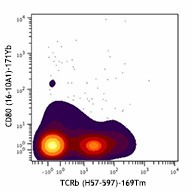
-

Mouse splenocytes were cultured with either media alone (top) or with LPS (bottom) for 4 days and then stained with 171Yb-anti-CD80 (16-10A1) and 169Tm-anti-TCRb (H57-597). Data provided by DVS Sciences. -

| Cat # | Size | Price | Quantity Check Availability | Save | ||
|---|---|---|---|---|---|---|
| 104735 | 100 µg | 85€ | ||||
CD80 is a 60 kD highly glycosylated protein. It is a member of the Ig superfamily and is also known as B7-1, B7, and Ly-53. CD80 is constitutively expressed on dendritic cells and monocytes/macrophages, and inducibly expressed on activated B and T cells. The ligation of CD28 on T cells with CD80 and CD86 (B7-2) on antigen presenting cells (such as dendritic cells, macrophages, and B cells) elicits co-stimulation of T cells resulting in enhanced cell activation, proliferation, and cytokine production. CD80 appears to be expressed later in the immune response than CD86. CD80 can also bind to CD152, also known as CTLA-4, to deliver an inhibitory signal to T cells.
Product DetailsProduct Details
- Verified Reactivity
- Mouse
- Reported Reactivity
- Dog
- Antibody Type
- Monoclonal
- Host Species
- Armenian Hamster
- Immunogen
- CHO cell line transfected with mouse B7 (CD80)
- Formulation
- Phosphate-buffered solution, pH 7.2, containing 0.09% sodium azide and EDTA.
- Preparation
- The antibody was purified by affinity chromatography.
- Concentration
- 1.0 mg/ml
- Storage & Handling
- The antibody solution should be stored undiluted between 2°C and 8°C.
- Application
-
FC - Quality tested
CyTOF® - Verified - Recommended Usage
-
This product is suitable for use with the Maxpar® Metal Labeling Kits. For metal labeling using Maxpar® Ready antibodies, proceed directly to the step to Partially Reduce the Antibody by adding 100 µl of Maxpar® Ready antibody to 100 µl of 4 mM TCEP-R in a 50 kDa filter and continue with the protocol. Always refer to the latest version of Maxpar® User Guide when conjugating Maxpar® Ready antibodies.
- Application Notes
-
Additional reported applications (for the relevant formats) include: immunoprecipitation2, in vitro and in vivo blocking of CTLA-4 Ig to CD80 by blocking costimulation of T cells by activated B cells2-4, and immunohistochemical staining of acetone-fixed frozen sections1,4. The Ultra-LEAF™ purified antibody (Endotoxin < 0.01 EU/µg, Azide-Free, 0.2 µm filtered) is recommended for functional assays (Cat. Nos. 104747-104752).
- Additional Product Notes
-
Maxpar® is a registered trademark of Standard BioTools Inc.
-
Application References
(PubMed link indicates BioLegend citation) -
- Harlan DM, et al. 1994. P. Natl. Acad. Sci. USA 91:3137. (IHC)
- Razi-Wolf Z, et al. 1992. P. Natl. Acad. Sci. USA 89:4210. (Block, IP)
- Hathcock KS, et al. 1994. J. Exp. Med. 180:631. (Block)
- Herold KC, et al. 1997. J. Immunol. 158:984. (Block, IHC)
- Ma XT, et al. 2006. Cancer Res. 66:1169.
- Andoniou CE, et al. 2005. Nature Immunology 6:1011. (FC)
- Lawson BR, et al. 2007. J. Immunol. 178:5366.
- Turnquist HR, et al. 2007. J. Immunol. 178:7018.
- Misra RS, et al. 2010. J. Exp Med. 207:1775. PubMed
- del Rio ML, et al. 2011. Transpl. Int. 24:501. (FC) PubMed
- Philipsen L, et al. 2013. Mol Cell Proteomics. 12:2551. PubMed
- Product Citations
-
- RRID
-
AB_2563763 (BioLegend Cat. No. 104735)
Antigen Details
- Structure
- Ig superfamily, 60 kD
- Distribution
-
Macrophages, activated B cells and T cells, dendritic cells
- Function
- T cell costimulation
- Ligand/Receptor
- CD28 (stimulatory), CD152(CTLA4) (inhibitory)
- Cell Type
- B cells, Dendritic cells, Macrophages, T cells, Tregs
- Biology Area
- Cell Biology, Costimulatory Molecules, Immunology, Neuroscience, Neuroscience Cell Markers
- Molecular Family
- CD Molecules, Immune Checkpoint Receptors
- Antigen References
-
1. Barclay AN, et al. 1997. The Leukocyte Antigen FactsBook Academic Press.
2. Linsley PS, et al. 1991. J. Exp. Med. 174:561.
3. Salomon B, et al. 2001. Annu. Rev. Immunol. 19:225. - Gene ID
- 12519 View all products for this Gene ID
- UniProt
- View information about CD80 on UniProt.org
Related FAQs
- Can I obtain CyTOF data related to your Maxpar® Ready antibody clones?
-
We do not test our antibodies by mass cytometry or on a CyTOF machine in-house. The data displayed on our website is provided by Fluidigm®. Please contact Fluidigm® directly for additional data and further details.
- Can I use Maxpar® Ready format clones for flow cytometry staining?
-
We have not tested the Maxpar® Ready antibodies formulated in solution containing EDTA for flow cytometry staining. While it is likely that this will work in majority of the situations, it is best to use the non-EDTA formulated version of the same clone for flow cytometry testing. The presence of EDTA in some situations might negatively affect staining.
- I am having difficulty observing a signal after conjugating a metal tag to your Maxpar® antibody. Please help troubleshoot.
-
We only supply the antibody and not test that in house. Please contact Fluidigm® directly for troubleshooting advice: http://techsupport.fluidigm.com/
- Is there a difference between buffer formulations related to Maxpar® Ready and purified format antibodies?
-
The Maxpar® Ready format antibody clones are formulated in Phosphate-buffered solution, pH 7.2, containing 0.09% sodium azide and EDTA. The regular purified format clones are formulated in solution that does not contain any EDTA. Both formulations are however without any extra carrier proteins.
Other Formats
View All CD80 Reagents Request Custom ConjugationCustomers Also Purchased
Compare Data Across All Formats
This data display is provided for general comparisons between formats.
Your actual data may vary due to variations in samples, target cells, instruments and their settings, staining conditions, and other factors.
If you need assistance with selecting the best format contact our expert technical support team.
-
Biotin anti-mouse CD80
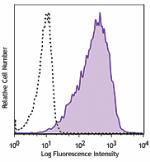
LPS-stimulated (3 days) BALB/c splenocytes were stained with... -
FITC anti-mouse CD80
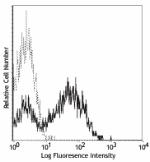
LPS-stimulated (3 days) BALB/c splenocytes stained with 16-1... -
PE anti-mouse CD80

Thioglycolate-elicited Balb/c mouse peritoneal macrophages s... -
Purified anti-mouse CD80
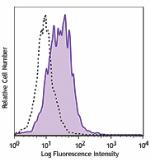
LPS-stimulated (3 days) BALB/c splenocytes stained with puri... -
PE/Cyanine5 anti-mouse CD80
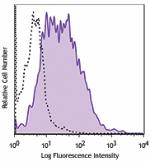
LPS-stimulated (3 days) BALB/c splenocytes were stained with... -
APC anti-mouse CD80
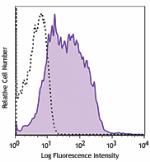
LPS-stimulated (3 days) BALB/c splenocytes were stained with... -
Alexa Fluor® 488 anti-mouse CD80

Thioglycolate-elicited Balb/c mouse peritoneal macrophages s... -
Alexa Fluor® 647 anti-mouse CD80

LPS-stimulated (day-3) C57BL/6 mouse splenocytes stained wit... 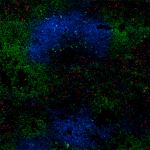
1 week 4T1 cells (mouse breast cancer cell line) induced BAL... -
PerCP/Cyanine5.5 anti-mouse CD80
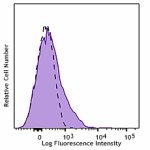
LPS-stimulated (day 3) BALB/c splenocytes were stained with ... -
Pacific Blue™ anti-mouse CD80

Anti-mouse IgM and CD40 (1C10) stimulated (4 days) C57BL/6 s... -
Brilliant Violet 421™ anti-mouse CD80
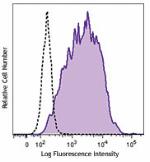
LPS-stimulated (day 3) C57BL/6 mouse splenocytes stained wit... 
C57BL/6 mouse frozen thymus section was fixed with 4% parafo... -
Brilliant Violet 605™ anti-mouse CD80
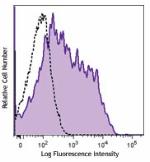
LPS-stimulated (day 3) C57BL/6 mouse splenocytes were staine... -
Brilliant Violet 650™ anti-mouse CD80

LPS-stimulated (day 3) C57BL/6 mouse splenocytes were staine... -
PE/Cyanine7 anti-mouse CD80

LPS-stimulated (day 3) C57BL/6 mouse splenocytes were staine... -
Purified anti-mouse CD80 (Maxpar® Ready)
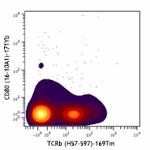
Mouse splenocytes were cultured with either media alone (top... 
-
PE/Dazzle™ 594 anti-mouse CD80
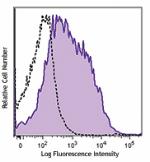
LPS-stimulated (day 3) C57BL/6 mouse splenocytes stained wit... -
APC/Fire™ 750 anti-mouse CD80
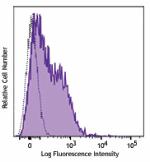
LPS-stimulated (3 days) C57BL/6 splenocytes were stained wit... -
Brilliant Violet 711™ anti-mouse CD80
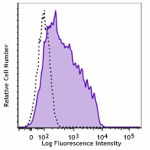
C57BL/6 mouse splenocytes were stimulated with LPS for 3 day... -
Brilliant Violet 510™ anti-mouse CD80
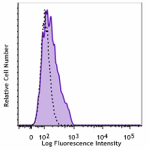
C57BL/6 mouse splenocytes were stimulated with LPS for 3 day... -
TotalSeq™-A0849 anti-mouse CD80
-
TotalSeq™-C0849 anti-mouse CD80
-
Ultra-LEAF™ Purified anti-mouse CD80
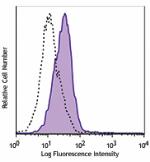
LPS-stimulated (3 days) BALB/c splenocytes stained with LEAF... -
Alexa Fluor® 594 anti-mouse CD80
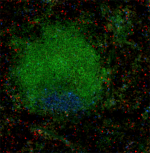
BALB/c mouse was subcutaneous injected with a million of 4T1... -
TotalSeq™-B0849 anti-mouse CD80 Antibody
-
PE/Fire™ 640 anti-mouse CD80
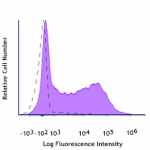
LPS-stimulated (day 3) C57BL/6 mouse splenocytes were staine... -
Spark NIR™ 685 anti-mouse CD80

LPS-stimulated (day 3) C57BL/6 mouse splenocytes were staine... -
Spark Red™ 718 anti-mouse CD80 (Flexi-Fluor™)
 Login / Register
Login / Register 











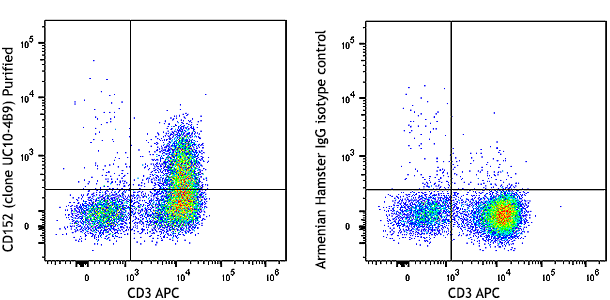
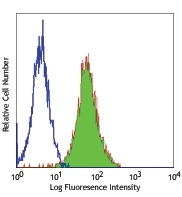
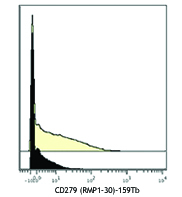



Follow Us